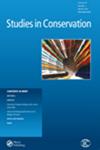非殖民化博物馆保护实践:来自英国的观点
IF 0.8
4区 化学
0 ARCHAEOLOGY
引用次数: 0
摘要
本文探讨了博物馆的非殖民化实践如何反映在保护实践中。它通过指导方针和开创性出版物回顾了不断变化的保护态度。它描绘了文物保护人员方法的变化,特别是在处理属于土著和代表性不足的群体的文物方面,主要是在英国和英语世界。我认为,目前对保护实践的改变并不激进,而是一个缓慢而深思熟虑的轨迹的一部分。本文章由计算机程序翻译,如有差异,请以英文原文为准。
Decolonising Museum Conservation Practice: A View from the UK
ABSTRACT This paper examines how museum practice around decolonisation is reflected in conservation practice. It reviews changing conservation attitudes through guidelines and seminal publications. It charts changes in conservators’ approach, especially regarding the treatment of artefacts belonging to Indigenous and underrepresented groups, mainly in the UK and English-speaking world. I suggest that current changes to conservation practice are not radical but are part of a slow and considered trajectory.
求助全文
通过发布文献求助,成功后即可免费获取论文全文。
去求助
来源期刊

Studies in Conservation
化学-分析化学
CiteScore
1.80
自引率
12.50%
发文量
73
审稿时长
>12 weeks
期刊介绍:
Studies in Conservation is the premier international peer-reviewed journal for the conservation of historic and artistic works. The intended readership includes the conservation professional in the broadest sense of the term: practising conservators of all types of object, conservation, heritage and museum scientists, collection or conservation managers, teachers and students of conservation, and academic researchers in the subject areas of arts, archaeology, the built heritage, materials history, art technological research and material culture.
Studies in Conservation publishes original work on a range of subjects including, but not limited to, examination methods for works of art, new research in the analysis of artistic materials, mechanisms of deterioration, advances in conservation practice, novel methods of treatment, conservation issues in display and storage, preventive conservation, issues of collection care, conservation history and ethics, and the history of materials and technological processes. Scientific content is not necessary, and the editors encourage the submission of practical articles, review papers, position papers on best practice and the philosophy and ethics of collecting and preservation, to help maintain the traditional balance of the journal. Whatever the subject matter, accounts of routine procedures are not accepted, except where these lead to results that are sufficiently novel and/or significant to be of general interest.
 求助内容:
求助内容: 应助结果提醒方式:
应助结果提醒方式:


